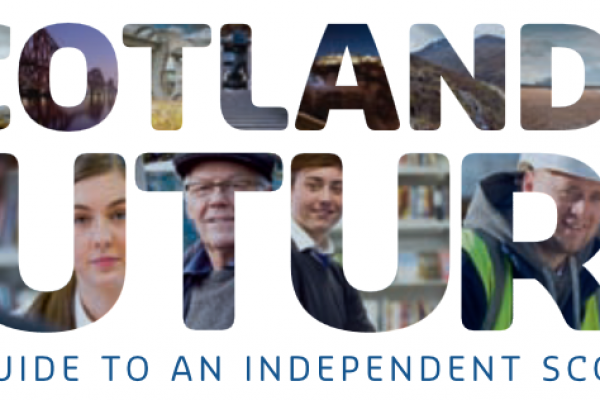by Charlie Jeffery, Future of UK and Scotland Research Co-ordinator
So the White Paper is now out. What are the first impressions of Scotland's Future on an initial skim?
First and foremost it's huge. At 670 pages it can't be digested in one go. This is not something aimed at the woman on the Coatbridge omnibus (though the accompanying 44 page Summary provides a more easily accessible version). It looks above all an attempt to counter all those claims we have heard in the last months that the Scottish Government didn't have a thought-through plan for independence. It might in that light appear aimed as much at neutralising the arguments of the UK Government and Better Together as at the voter trying to work out what to do in the polling booths next September.
The White Paper marks out the terrain of independence in three ways. The first is to set out a fairly select number of areas in which an independent Scotland would be markedly different to a Scotland within the UK. The aim is to pose tough challenges to the claim that we are 'better together', as the No campaign and UK Government argue. Here the messages are simple:
- We will get governments we vote for (aka no more Conservative-led UK Governments with weak representation in Scotland)
- No more 'bedroom tax' (as the headline message of a wider theme about a sense of fairness and social justice the Scottish Government thinks can't be delivered through UK institutions)
- A confidence in the role of the state in defining and delivering public services (the headline bogey issue here is the UK Government's privatisation of the Royal Mail)
- And no nuclear weapons
Second there are areas in which the Scottish Government would not do things so much differently than the rest of the UK, but rather argues that it could do those things better if Scotland were an independent state. The most obvious area here is an economic policy which would not be wildly different in the balance of market and state or in nurturing key economic sectors; the argument is rather that economic policy would be better attuned to Scottish circumstances and less led by the gravitational pull of London and the South East of England if Scotland were independent.
And then there are areas in which the same things would happen in much the same way. The most obvious example is on currency - Scotland would share in a sterling area, working with and under the policy levers of the Bank of England. But there are plenty more examples of other continuities and of services that would be shared between an independent Scotland and the rest of the UK, like a continuing common travel area, a common research area for university research funding, and reciprocal arrangements between a new Scottish Broadcasting Service and the BBC so everyone can still watch Doctor Who.
How these three ways of framing independence (doing things differently, doing the same things better independently, and doing the same things in much the same way as now in partnership with the rest of the UK) will be judged needs to await more considered reflection. Our event on the White Paper on 30 November will give us some of that as we look at the vision of independence in the White Paper and the process of transition to independence it sets out. But for now three initial comments:
First there is now a comprehensive statement about independence which will give the hardy reader more of an opportunity to make up his or her mind (and perhaps more significantly will give Yes campaigners a much better worked through script than they have had hitherto). Moreover, the 670 pages add up to a consolidated rebuttal file for use against all the attacks and challenges that have and will come from the other side. It is striking, for example, that the White Paper poses and answers 650 questions about independence, 150 more than the 500 Questions posed by the Better Together campaign earlier this year.
Second, however comprehensive it is, the White Paper is still (of course, and just like the UK Government's Scotland Analysis paper series) selective, drawing on supporting evidence that fits its bill, for example focusing on medium term fiscal projections (which are generally more positive than longer term ones), or legal views that support continued membership of the EU during the transition to independence. These and other areas are contested and will continue to be subject to, no doubt, intense debate. In such areas the White Paper cannot be definitive, and much will depend in the coming months on the effectiveness with which the two sides pursue their contrasting cases.
Third, much rests on the willingness of the UK Government after a Yes vote to negotiate outcomes on all those areas of continuity and shared cross-border services that match the aspirations set out in the White Paper. While current UK Government statements on these issues are deliberately uncooperative, and may soften if there is a Yes vote, those statements at the very least suggest negotiations would be tough. In some areas - and currency is clearly the most significant - we cannot know now, whatever the White Paper says, how those negotiations would work out.

